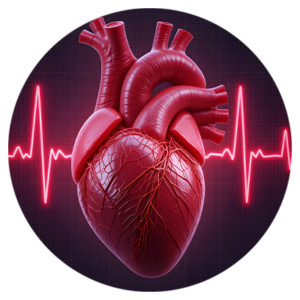By Anna Dwyer
Nearly half of heart attacks strike silently, causing heart damage without noticeable symptoms. These cases are just limited to the older generation. Even young, healthy individuals are at risk of silent, but deadly cardiovascular risks. 1 in 5 heart attack patients are under 40, and cases such as these are rising. Cardiovascular monitoring is essential for catching cardiovascular problems before they arise.
The Silent Threat of Heart Attacks
What is a silent heart attack? Silent heart attacks have few or no recognizable heart attack symptoms. Common symptoms such as chest pain or shortness of breath may not be experienced or may be misdiagnosed during a silent heart attack, meaning that most people may not even realize they are experiencing is a heart attack. Like any heart attack, silent heart attacks can also increase the risk of having another heart attack or future complications such as heart failure.
Why Are Young People at Risk?
The older generation is not the only population with increased risk of cardiovascular disease. University of Oklahoma College of Medicine cardiology professor, Dr. Stavros Stavrakis, M.D., PhD stated, “The reality is that heart disease doesn’t  suddenly appear at 60. It develops gradually over decades, often beginning in your 20s and 30s.” This is due to the risk factors young people typically overlook. The younger generation is more likely to have certain lifestyle factors that affect cardiovascular risk, such as prolonged sitting and screen time, high-stress jobs and poor work-life balance, and inconsistent sleep patterns. Cardiovascular disease doesn’t just come down to lifestyle, genetics can also play a large role in influencing the risk of cardiovascular diseases.
suddenly appear at 60. It develops gradually over decades, often beginning in your 20s and 30s.” This is due to the risk factors young people typically overlook. The younger generation is more likely to have certain lifestyle factors that affect cardiovascular risk, such as prolonged sitting and screen time, high-stress jobs and poor work-life balance, and inconsistent sleep patterns. Cardiovascular disease doesn’t just come down to lifestyle, genetics can also play a large role in influencing the risk of cardiovascular diseases.
The Role of ECG in Detecting Cardiovascular Disease
How are silent heart attacks diagnosed? During an electrocardiogram (ECG), your physician will pick up on silent heart attacks through the electrical activity of your heart. After a silent heart attack, the ECG readings will show damage to the heart’s muscle as a distinct signature. ECG testing is also a way to detect most cardiovascular diseases, such as arrhythmias and coronary artery disease.
What is AI’s Role in ECG?
The introduction of AI in ECG is innovating the way physicians detect and diagnose cardiovascular diseases. Soon, ECGs will have the ability to predict heart conditions based on patterns in the patient’s heart activity, opening doors to personalized risk predictions for those who have a high risk of developing cardiovascular diseases. Although technology is not completely there yet, ECG testing is essential for patient monitoring and keeping a healthy heart.
Detecting and Preventing Heart Disease Early
ECGs and other cardiovascular testing are important for those who may be experiencing unexplained fatigue, discomfort, or irregular heart rhythms. Checking in with your doctor about unexplained symptoms is key to preventing and handling future problems. Remember, it’s better to get evaluated for nothing than to risk a sneaking silent heart attack. Practicing preventative measures is key to preventing the development of heart disease. Getting regular checkups, managing your stress, and eating healthy are all ways to prevent the future risk of cardiovascular disease. Even simple activities such as yoga or walking can benefit your heart health.
At Nissha Medical Technologies, we prioritize heart health and catching cardiovascular disease early. Our ECG electrodes are just one way physicians detect silent heart attacks and ensure their patient’s hearts remain healthy.
Learn more about our ECG electrodes.

